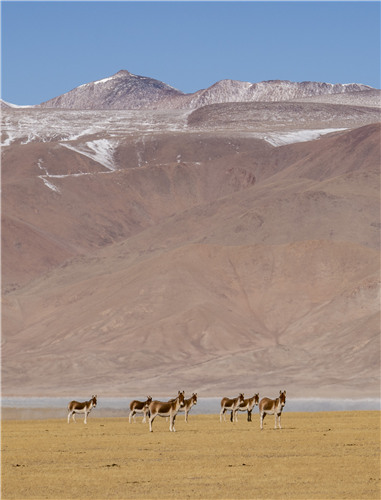Tibet sees remarkable increase in wild animals
Updated: 2021-08-24 (Xinhua)  Print
Print 



Two Tibetan antelopes spotted on the Qinghai-Tibet Plateau, Southwest China's Tibet autonomous region. [Photo/Xinhua]
The forestry authorities of Southwest China's Tibet autonomous region said they have seen significant growth of the wildlife population due to their continuous protection efforts.
Compared to statistics released by the regional wildlife conservation society in the 1990s, the population of the Tibetan antelope has increased from 50,000-70,000 to over 200,000 and the number of Tibetan wild ass has increased from 50,000 to about 90,000.
The number of black-necked cranes, which are under top national protection in China, has grown to 8,000 from 1,000-3,000, while the number of wild yaks rose to about 10,000.
The population of snow leopards, argali and blue sheep has also increased significantly.
Tibet has been making efforts to protect wild animals over the past few decades. It implemented regulations and laws to create a better environment for both wild animals and local residents whose lives were affected by wild animals.

A small herd of kiangs pass through the wild field in Naqu county, Southwest China's Tibet autonomous region. [Photo/Xinhua]
The region has invested more than 1.3 billion yuan (about $185 million) to build breeding bases, nature reserves, monitoring stations and rescue stations for wildlife. Among the investment, nearly 640 million yuan was used as compensation paid to local residents who suffered damages or impacts caused by wild animals.
The local forestry authorities said Tibet would step up law enforcement in wildlife protection, strengthen the monitoring and prevention of wildlife epidemics and promote the establishment of an early warning mechanism for wildlife diseases in the future.








